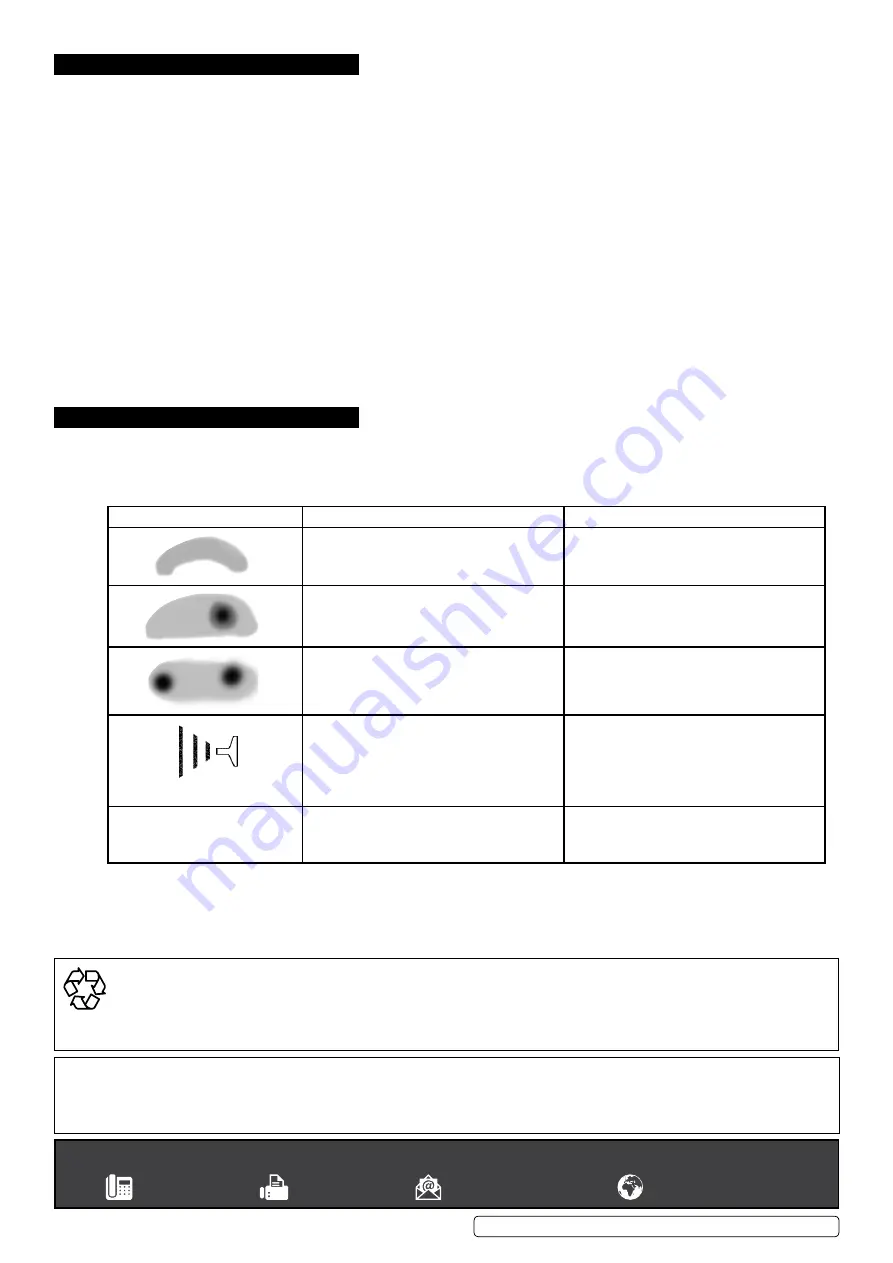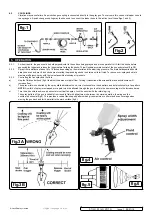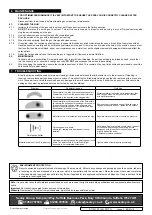
6. maintenance
FOr Optimum perFOrmance it is very impOrtant tO ensure tHe spray Gun is cOrrectly cleaned aFter
eacH use.
disconnect from the air supply before attempting any cleaning or maintenance.
6.1.
cleaninG tHe Gun
6.1.1.
Immerse the front end of the gun only in solvent, until the solvent just covers the fluid connection.
8
dO nOt
immerse the entire gun in solvent. This will cause lubricants to dissolve and packing to dry out. dirty solvent may also
clog the narrow passages in the gun.
6.1.2.
Use a bristle brush and solvent to wash off accumulated paint.
6.1.3.
Wipe the outside of the gun with a dampened solvent rag.
6.1.4.
When finished spraying, flush the gun through with clean solvent.
6.1.5.
If required, clean the nozzles by soaking them in solvent to dissolve any dried material and then use a brush. Blow them clean with air.
Handle all nozzles carefully and do not make any alterations in the gun. If there is a need to probe the holes in the nozzles, ensure a tool
that is softer than brass is utilised, under no circumstances use a metal tool, as the slightest amount of damage will adversely affect the
spray pattern.
6.1.6.
Adjust the fluid needle valve so that when the gun is triggered, air flow occurs before fluid flow.
6.2.
maintenance
Take care when re-assembling. Screw parts hand tight to avoid cross-threading. If a part cannot easily be turned by hand, check that
it is the correct part, or unscrew it, realign and retry.
dO nOt
use excessive force when re-assembling.
6.3.
When changing the nozzle size, ensure the complete nozzle set is fitted. This consists of air cap, fluid nozzle and paint needle. Insert the
fluid nozzle before paint needle.
7. trOuBlesHOOtinG
A faulty spray is usually caused by improper cleaning or dried material around the fluid nozzle tip or in the air nozzle. If cleaning is
required, remove these parts and soak them in solvent. T his will soften the dried material which can then be removed with a brush or a
cloth. These parts are carefully machined and any damage to them will cause a faulty spray. If either the air nozzle or fluid nozzle are
damaged, they must be replaced before a perfect spray can be obtained.
Original Language Version
© Jack Sealey limited
sealey Group, Kempson Way, suffolk Business park, Bury st edmunds, suffolk. ip32 7ar
01284 757500
01284 703534
sales@sealey.co.uk
www.sealey.co.uk
envirOnment prOtectiOn
Recycle unwanted materials instead of disposing of them as waste. All tools, accessories and packaging should be sorted, taken to
a recycling centre and disposed of in a manner which is compatible with the environment. When the product becomes completely
unserviceable and requires disposal, drain any fluids (if applicable) into approved containers and dispose of the product and fluids
according to local regulations.
note
: It is our policy to continually improve products and as such we reserve the right to alter data, specifications and component parts without prior
notice.
important
: no liability is accepted for incorrect use of this product.
Warranty
: Guarantee is 12 months from purchase date, proof of which is required for any claim.
S713G, S714G, S717G Issue 1 08/01/19
Problem
Possible Causes
Solution
dried material in a side port restricts passage of air.
Greater flow of air from the clean side port forces a
fan pattern in the direction of the clogged side.
dissolve material in the side ports with solvent, then
blow the gun clean. do not poke into the nozzles
with metal instruments.
dried material around the outside of the fluid nozzle
tip restricts the passage of atomizing air at one point
through the centre opening of the air nozzle and
results in the pattern shown. This pattern can also
be caused by a loose air nozzle.
Remove the air nozzle and wipe off fluid tip using a
rag dampened with solvent. Tighten the air nozzle.
material too thin or atomization air pressure too high. Regulate material viscosity or reduce air pressure.
P
aint spray flutter
not enough paint in bottle.
nozzle set / seating dirty, damaged or loosely
installed.
Refill bottle. Remove the fluid nozzle, clean the back
of the nozzle and the nozzle seat using a cloth
dampened with thinner. Refit the nozzle and secure
it tightly against the body.
If necessary replace nozzle set.
material bubbles or “boils” in paint cup.
Atomised air flowing through the paint channel to the
bottle. The paint nozzle is not sufficiently tight.
Air nozzle is not completely screwed on.
Tighten, clean or replace parts accordingly.





















